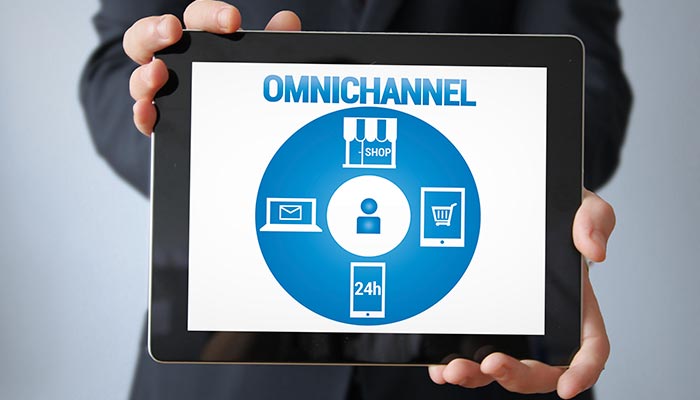Recent Articles
5 Tips to Help Retailers to Prepare for the Holidays
It's July, so if you're a retailer, it's time to start preparing for the holiday season. Freestyle Solutions is here to help online retailers and brands survive and thrive during the busy season. Below are some tips that will help your business this holiday season. Prepare Your Website Is your website ready for the traffic spikes the holidays can bring? Testing load time for API’s and your site’s speed is a good idea before the holiday season. If you collect customer data or accept credit cards online, you’ll want to verify your site is PCI compliant. The Payment Card Industry Data Security Standard (PCI DSS) is a set of security standards designed to ensure that all companies that accept, process, store or transmit credit card information maintain a secure environment. Is your website secure? Make sure your ecommerce and content management platforms have the latest updates installed and are using best security practices. If this is beyond IT team’s area of expertise, you may want to hire a security consultant to verify your website is not vulnerable to an attack. Businesses are frequently
Why is Omnichannel so hard?
Today, retail executives struggle with omnichannel demands and expectations. According to a report from Retail Dive, only "21 percent of retail executives are more confident now than a year ago about their company’s ability to deliver omnichannel services". The challenge of implementing omnichannel capabilities is so hard for many reasons. The shop-anywhere, pick-up anywhere, ship anywhere, return anywhere expectations of today’s shopper drives demands on the infrastructure of retailers and ecommerce merchants like never before. Here are just a few of the challenges facing today’s mid-sized retailers and ecommerce merchants: Technology Retailers and merchants need to get different systems that were designed to operate autonomously to now interact seamlessly, as if they were one comprehensive system. Examples are many, such as warehouse management systems (WMS), designed to manage and track product procurement, receipt, storage fulfillment and shipping now needing to interact with mobile point-of-sale (POS) systems. This type of integration was never needed in the past. The POS only needed to manage the products physically present in one particular retail location, and manage the sale transaction and process the payment for
Thoughts on the Transformation of Order Management
The order management landscape has evolved over the past thirty years when we (then Dydacomp) introduced to catalogers the first order management system (OMS). eCommerce, mobile and the Internet of Things (IOT) have all put more pressure on the OMS to be the central repository for customer, order, inventory and product information to provide a 360 view of their business. For this reason, we find ourselves innovating again to meet the demands of the next generation OMS – the Omnichannel platform. An OMS is more than just managing call center orders to fulfillment, today order management has the responsibility of optimizing the customer experience. Companies are looking for the OMS to tie in with all sales channels, from ecommerce and mobile to call centers and stores. Marketplaces such as Amazon, Walmart, and eBay have added complexity to inventory visibility and fulfillment. The requirements for providing broader product assortments and a differentiated customer experience has grown exponentially due to the competition being one click away. So what will you need moving forward to be successful? Freestyle Solutions sees the order management
What Omnichannel Means Today
This post covers the elements and challenges of creating an omnichannel environment for retailers according to Sucharita Mulpuru-Kodali, VP & Principal Analyst at Forrester Research. Sucharita shared her thoughts in our recent webinar, “Beyond the Buzz What Omnichannel Really Means.” What Omnichannel Means Today Omnichannel has meant many things to many people over the years as the term has morphed based on new technologies hitting the retail scene. With this ever evolving landscape, what does omnichannel mean and what are the specific elements of omnichannel today? When talking about omnichannel, retailers are mainly focusing on fulfillment of an order or a transaction in the store. The common fulfillment processes include: • Buy online, ship to store • Manage in-store inventory visible online • Buy in-store, ship to customer from store (endless aisle) • Buy online, pick up in store • Ship from store • Reserve online, pickup in store Challenges with Omnichannel Fulfillment The short answer is with legacy systems already in place, getting it all work together is costly and cumbersome. Below are some of the most common challenges
The Importance of API Management
Best practices in Application Programming Interface (API) management can often get overlooked, as retailers and brand focus heavily on fulfillment, personalization, and general ecommerce strategies. In fact, the most basic API security measures go unnoticed the most, according to a recent study. “30 percent of APIs are planned out with no input from the IT security team, and 27 percent of APIs proceed through the development stage without the IT security team weighing in.” Furthermore, 87% of respondents run an API management platform, while 63% use a platform developed in-house. However, basic API security practices were utilized by less than half of respondents. An API provides high-level business-based transaction functions to interface with major areas of an order management system (OMS), including order, customer, stock, and inventory. To efficiently manage an omnichannel sales strategy, below is a checklist of systems also necessary within an OMS. Ecommerce platform for product and order information ERP for product, inventory, warehouse management, and financials Payment for authorization, settlement, fraud, and taxCRM for customer data A good API should be secure, and we work to
Embracing the Ecommerce Purchase Funnel
Managing the retail supply chain from the point of purchase to management and delivery, has reached a point where automation is necessary to provide the maximum inventory turnover rate. As retailers begin to recognize where these processes line up, it becomes easier to understand how the business is affected by even small changes in processes and practices, such as the power of purchasing. Adapting to the Ecommerce Purchase Funnel: The ecommerce purchase funnel is of course a recurring trend in consumer and retailer shopping, and as shopping evolves, an increase in sales and innovation is inevitable. "B2C ecommerce sales in the U.S. totaled 531.8 billion U.S. dollars in 2012 and are expected to grow to 554.81 billion U.S. dollars by 2016." -Statista According to Custora, consumers are spreading out their retail purchasing across channels, which forces retailers to grow their online marketing efforts. Some aspects that have increased ecommerce referrals last year include, paid search, affiliate marketing, and email. Another important piece of the purchase funnel to focus in relation to Dynamic Order Management (DOM) includes organizing shipping methods. “Retailers that can't afford


